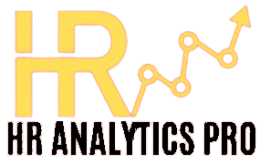People operations vs. HR management
February 12, 2024 2024-02-24 12:32People operations vs. HR management
People operations vs. HR management
People operations and HR are functions that take care of employees within the organization. Although they have similar tasks, people teams and HR teams differ in the expectations and in the way they perform these tasks.
What is people operations?
People operations, often termed “People Ops,” is a modern approach to managing employees within an organization. It adopts a proactive and strategic mindset, focusing on creating a robust and healthy workplace environment. People operations prioritize the overall employee experience, from onboarding to offboarding, ensuring that staff are resourced, supported, and empowered in their roles. The goal is to align human resources with the company’s mission and vision, fostering a culture of transparency, collaboration, and continuous growth.
What is HR management?
Human Resource (HR) Management is a traditional function responsible for handling various administrative and operational tasks related to employees. This includes recruitment, payroll processing, performance appraisals, and addressing employee grievances. HR management often operates reactively, addressing issues as they arise and ensuring compliance with labor laws and company policies. While it plays a crucial role in the day-to-day functioning of an organization, HR management is often perceived as being more transactional and less strategic compared to people operations.
Differences between People operations and HR management
Here are the main differences between people operations and HR management:
Reactive vs. Proactive
Historically, HR has been seen as a reactive function, stepping in to address issues as they arise. For instance, when an employee resigns, HR’s immediate response is to initiate the recruitment process for a replacement. This approach is often about damage control and immediate solutions.
In contrast, people operations adopt a forward-thinking mindset. They not only address the present but also anticipate future challenges. By focusing on creating a robust and healthy workplace environment, they devise strategic hiring plans that align with long-term business goals, ensuring continuity and growth.
Execution vs. Strategy
HR has traditionally been viewed as a checklist of tasks. From recruiting and onboarding new employees to managing payroll and conducting performance reviews, HR’s role has been largely transactional.
While these tasks are essential, they often lack a strategic perspective. People operations, however, take a broader view. Instead of just ticking off tasks, they start by understanding the overarching business objectives. They then strategize on how to motivate, train, and lead employees to achieve these goals, ensuring that human resources align with the company’s mission and vision.
Siloed teams vs. Multi-discipline teams
There’s a prevailing notion, whether accurate or not, that HR teams operate in isolation, often withholding information and making decisions behind closed doors. This perception can sometimes lead to a lack of trust between employees and the HR department.
People operations challenge this model by promoting transparency and open communication. Recognizing the value of diverse perspectives, people operations teams are often multidisciplinary.
They might include a tech expert ensuring that employees have the necessary tools and training, while another member might focus on fostering collaboration by designing efficient meeting structures. These meetings often bring together representatives from various departments, encouraging cross-functional collaboration and working towards shared objectives.







